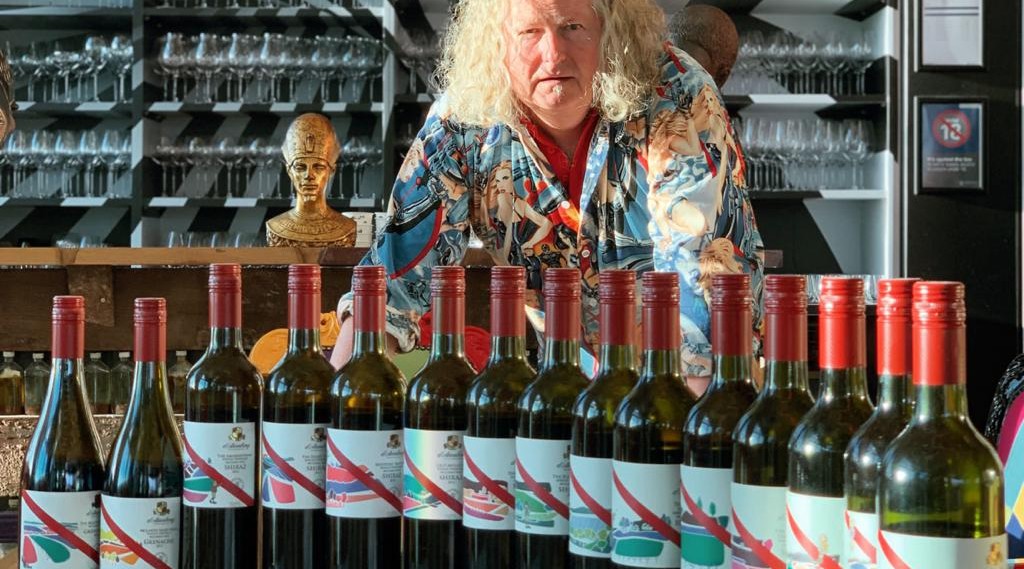AMAZING SITES AND ANCIENT SOILS: d’ARENBERG’S 2014 SINGLE VINEYARD COLLECTION

Chester Osborn looks over the latest Amazing Sites collection from d’Arenberg.
Chester Osborn’s family has been farming grapes and making wine in McLaren Vale for over 100 years. This coastal region of South Australia is about good living and the simple life, making famously reliable wines with a reputation for generous and drinkable reds. But dig a little and you’ll find beneath the ground an incredibly complex geological puzzle. “When we mapped the regional geology it showed such incredibly diverse terroir and profound differences in a contained area,” Osborn says. “Soils range from less than 10,000 years old to almost a billion years of age.”
Osborn was fascinated by the intricate geology of the region and he decided to bottle a trio of single site wines from the 2009 vintage, something he had not done before. The model at d’Arenberg has traditionally been based around blending and building wines in the cellar and this model has served them well. Much of Osborn’s most important winemaking time is spent tasting and assembling wines in his tasting room and, having spent decades exploring the myriad of components they work with at d’Arenberg, he decided it was time to step out and bottle some smaller parcels.
The Amazing Sites project is routinely a collection of 14 to 15 wines, selected from around 20 shiraz sites and three grenache sites spread across the region, with a focus on a cluster of parcels located around the winery. The winemaking process is standardized across all wines to emphasize site-driven differences and the wines are matured in neutral wood and bottled in unison. They are all priced identically and production is typically between 150 to 250 dozen of each wine.
The 2014 vintage is the newest release of the Amazing Sites collection and is a vintage that has a commanding style to it. “2014 is a more powerful vintage in terms of tannin and darker fruit,” Osborn says. “And there’s real tautness and definition. These will be a long-aging set of wines.”
Osborn spent much time among the villages of great French wine regions and more recently turned his attention to Piedmont in Italy and the communes of Barolo as a case study for his own work in Australia. “The profound differences of site and taste and their understanding of terroir fascinates me,” he says. “W\e have a richer story in Australia and that’s why we make this collection of wines from our greatest sites.”
- Nick Stock tastes the Amazing Sites collection with Chester Osborn.
These are certainly powerful wines and there’s a common thread of density and long tannin structures running through the shiraz. Osborn’s fascination with Barolo is evident in the way he allows tannin to find full voice. The interplay of limestone and sandstone subsoils is evident and the other strong influencing factor here is vine age. The older vine parcels deliver the most polished and complex wines here.
d’Arenberg is a brand well-known for its vibrant personality and esoteric wine names and this is dialed right up across the Amazing Sites collection. The top wine is the 2014 Shiraz J.R.O. Afflatus (96 points) from a plot planted in 1910, a parcel that has performed well across multiple releases now. It is one of the original plantings of Joseph Rowe Osborn and the sandy loam on sandstone and clay is a highly eroded soil type. It is the most distinctive wine in the collection with aromas of persimmon, pomegranate and passion fruit among red berries and very deep-set, long and resolved tannins.
The 2014 Shiraz McLaren Vale The Other Side (95 points) is from a parcel planted in 1918 in a mix of 25-50 million-year-old limestone and sandstone sub-soils, which are split by a small creek running through the parcel. This is a more savory expression with tar, coal smoke and dry woody tones on the nose and dark berry fruit flavors on the palate, framed in fine, firm and long tannins. It is quite Barolo-like in many ways.
The outstanding grenache from 2014 is the McLaren Sand Hills bottling (95 points) which is from an inland site with sandy soil on a sandstone base. Grenache performs exceedingly well in these soils and delivers very fragrant red fruit with striking linear purity and detail, enhanced by naturally low pH and high acidity.
Much has gone before to arrive at the realization of this project. The 100 years of family farming and consistent, traditional winemaking is the perfect backdrop for what is an incredibly eclectic region, geologically. The reputation of McLaren Vale has been built on shiraz and as one of reliable quality and consistent style, perhaps at the expense of specific interest and nuance. But there is very distinctive natural character to be found and these wines certainly make a strong case for understanding that quality can be captured in very specific, unique, site-driven style.
– Nick Stock, executive editor


